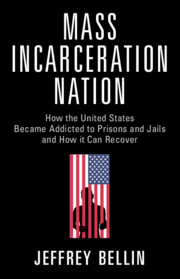 Mass Incarceration Nation
Mass Incarceration Nation Book contents
- Mass Incarceration Nation
- Mass Incarceration Nation
- Copyright page
- Contents
- Figures
- Tables
- Acknowledgments
- Introduction
- Part I What Is Mass Incarceration?
- Part II The Building Blocks of Mass Incarceration
- 5 A Crime Surge
- 6 Repeating Patterns
- 7 Legislating More Punishment and Less Rehabilitation
- 8 The Futility of Fighting Crime with Criminal Law
- 9 The Role of Race
- Part III The Mechanics of Mass Incarceration
- Part IV The Road to Recovery
- Conclusion
- Notes
- Index
8 - The Futility of Fighting Crime with Criminal Law
from Part II - The Building Blocks of Mass Incarceration
Published online by Cambridge University Press: 03 November 2022
- Mass Incarceration Nation
- Mass Incarceration Nation
- Copyright page
- Contents
- Figures
- Tables
- Acknowledgments
- Introduction
- Part I What Is Mass Incarceration?
- Part II The Building Blocks of Mass Incarceration
- 5 A Crime Surge
- 6 Repeating Patterns
- 7 Legislating More Punishment and Less Rehabilitation
- 8 The Futility of Fighting Crime with Criminal Law
- 9 The Role of Race
- Part III The Mechanics of Mass Incarceration
- Part IV The Road to Recovery
- Conclusion
- Notes
- Index
Summary
There is a paradox in the American narrative of Mass Incarceration. In theory, making criminal laws more severe should not lead to large prison populations in the long term. That’s because as laws become more severe, crime becomes increasingly unattractive. That should lead, over time, to less crime and shrinking prison populations. No crime is worth the punishments currently on the books. And by now, decades into “tough on crime” policies, everyone should know that crime doesn’t pay. There should be no drug dealing, no unlawful weapons possession, no violence, no repeat offenders. It may sound silly, but if you look at the claims politicians made about why they were increasing criminal severity, this was the idea.
- Type
- Chapter
- Information
- Mass Incarceration NationHow the United States Became Addicted to Prisons and Jails and How It Can Recover, pp. 67 - 76Publisher: Cambridge University PressPrint publication year: 2022
